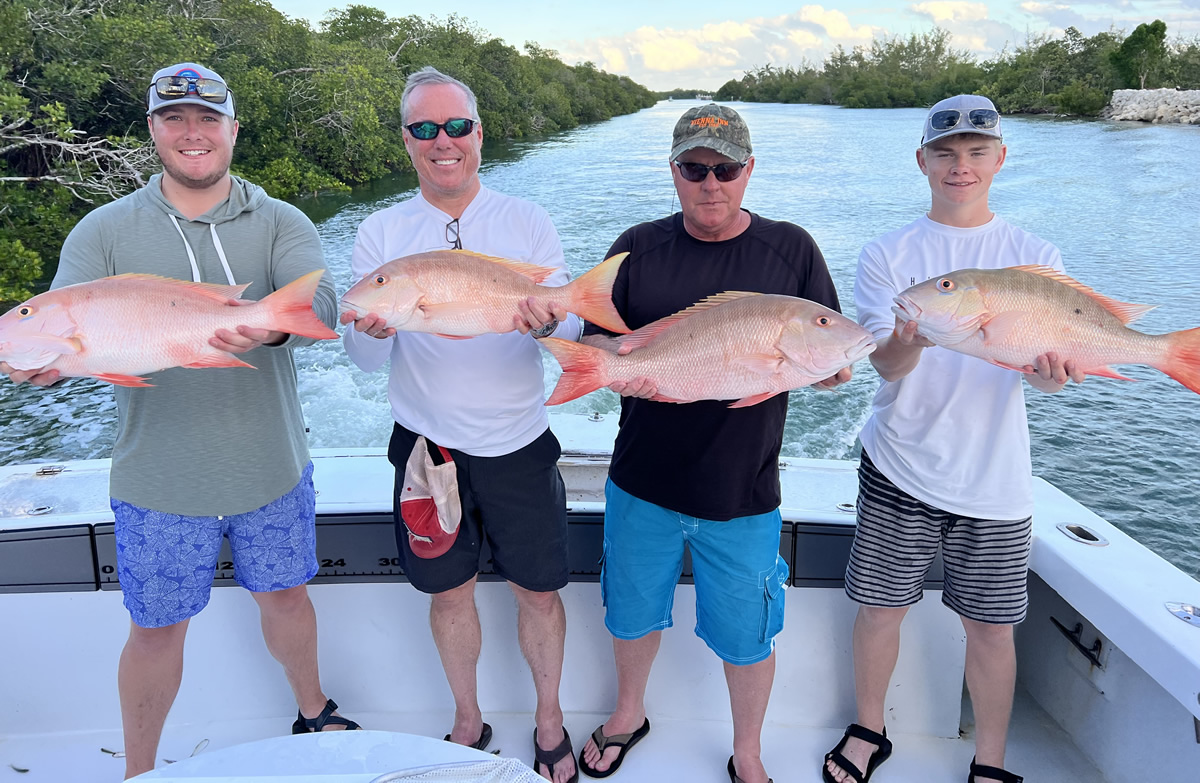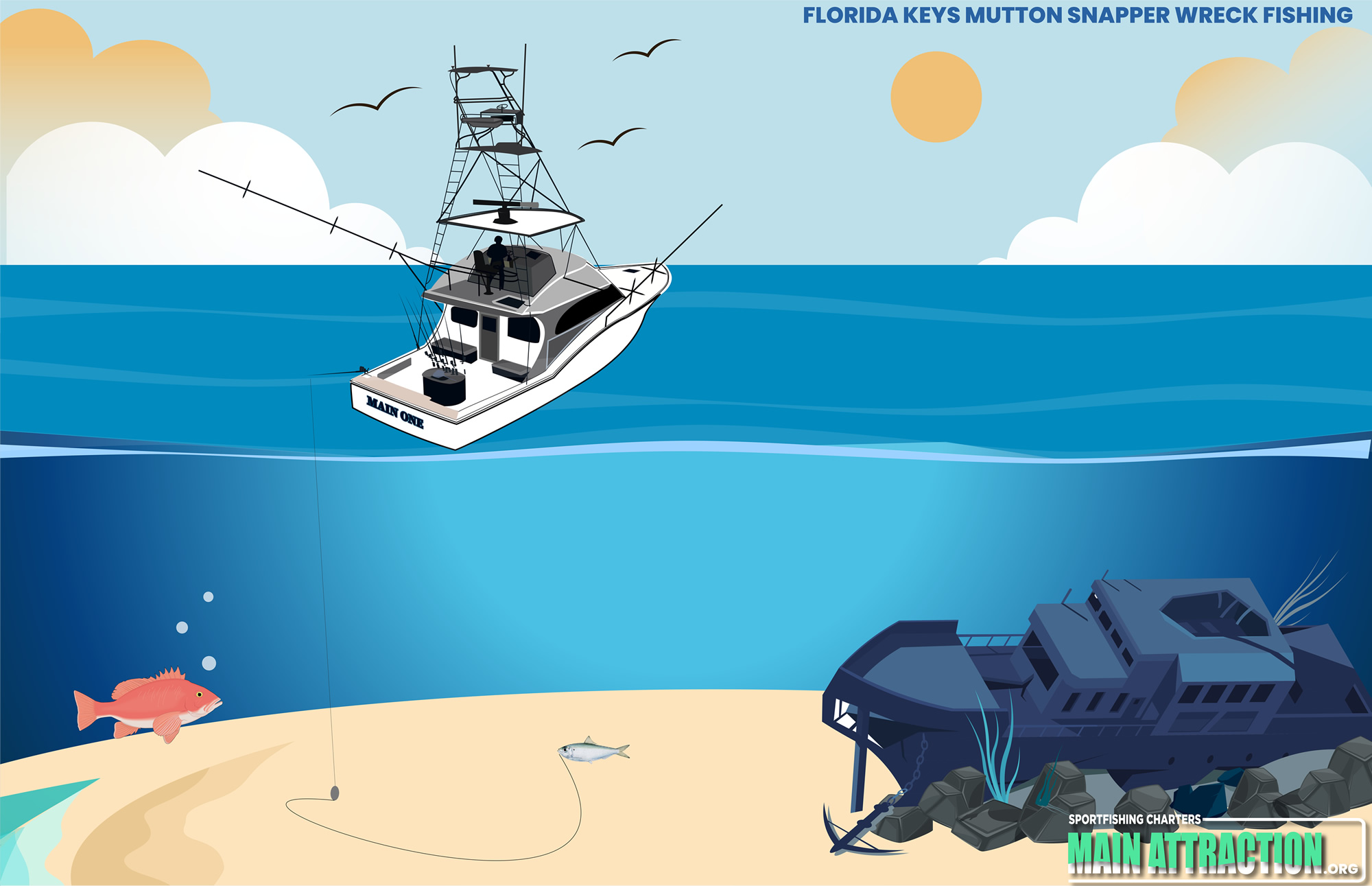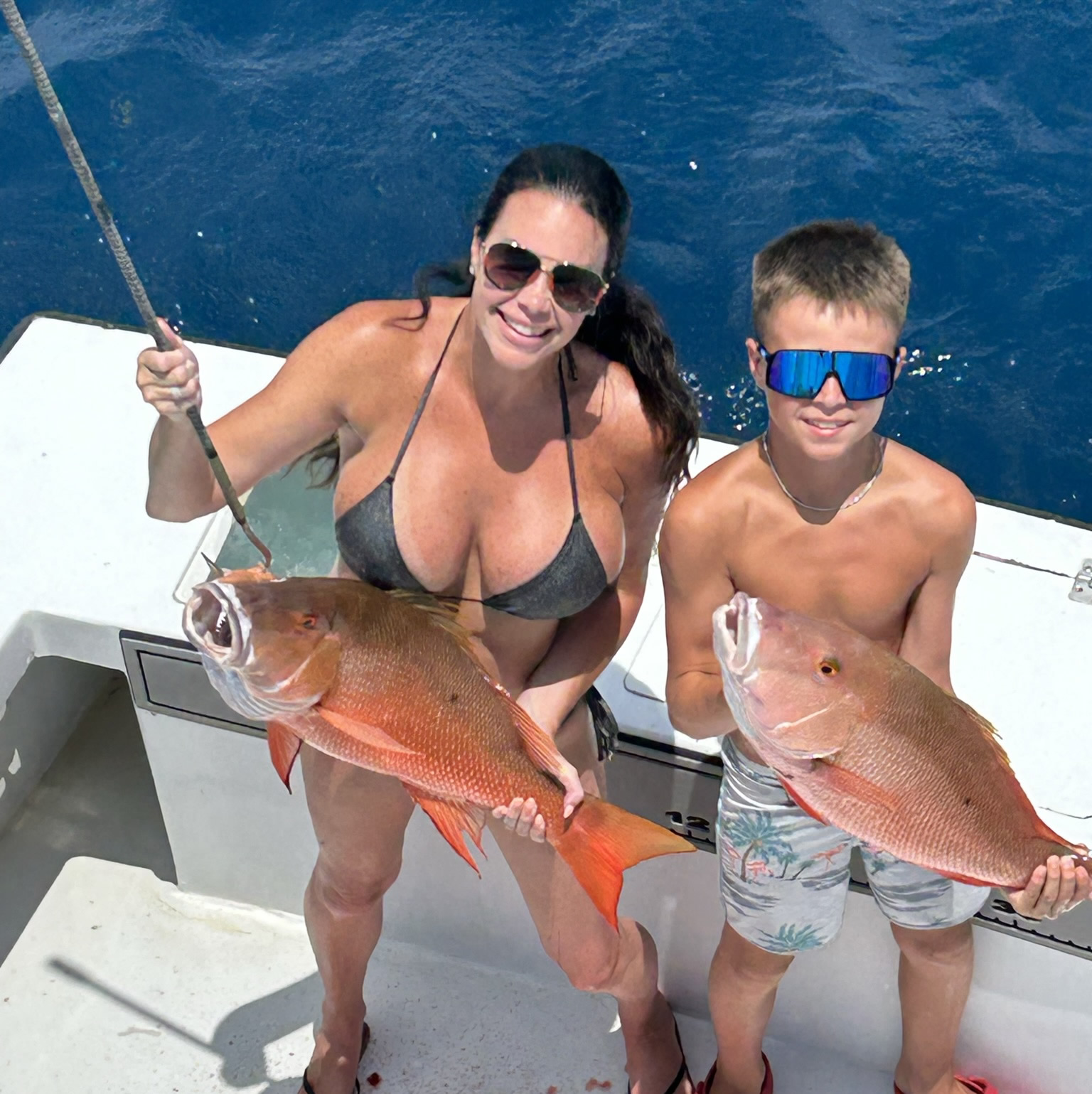The Secret To Successful Mutton Snapper Fishing Trips
You may have recently seen quite a few photos of our customers with Mutton Snapper on social media. While our customers love to catch Mahi this time of year, it has been unusually inconsistent lately. Fortunately, there is a variety of species to catch in our waters year-round, including the delicious Mutton Snapper.
Depending on where and when you fish for Mutton Snapper, how you target them might be vastly different. If you have ever fished for Mutton Snapper in Key West, you most likely have done it differently than we do here in Marathon, Florida Keys. Your Captain may have brought you to the edge of the Marquesas, anchored up, set up a nice chum slick, and started drifting back tasty treats like Amberjack roe on jigheads.
Here in Marathon, we have a lot of boats, many of them captained by locals who have been fishing these waters their entire lives. While tourists visit Key West for various reasons, most of our tourism in Marathon is focused on fishing. Because of this, there is significant pressure on the fish here; it takes proven techniques to produce fish daily.
Yes, you can catch a Mutton snapper on the reef, or near a wreck; heck, we have even caught 20-pounders eating kite baits before! However, there is a big difference between catching a Mutton periodically versus catching them consistently.

With the right techniques Mutton Snapper can be caught consistently.
How To Catch Mutton Snapper On The Reef
While you can catch Mutton Snapper year-round, some months are better. Summertime is one of the best times because it is the time of year when Snappers are spawning.
If you are Yellowtailin’ or fishing the Mangrove Snapper spawn on the reef in June or July, consider drifting a jighead with a live bait back in the chum slick. Try to avoid the rocks as that is likely to attract a Grouper. For a Mutton you want that bait in the sand and grass, so look for spots that aren’t black on the bottom. Once you hook a Mutton, wind like crazy because it will run for the closest nearby rocks to break you off.

Look for rocks (black bottom) to drop your anchor in, then let out rope until your transom is over sand or grass (light blue or green bottom.)
How To Catch Mutton Snapper On The Wrecks
If your sole purpose is to target these beautiful fish, there is an even better way. For our Captains here at Main Attraction, catching Mutton Snapper near shipwrecks is their favorite way to catch Mutton Snapper, specifically the larger ones.
Our Captains don’t anchor up for this, and they do not chum. This technique entails our Captains getting ahead of the wreck after they figure out how their vessel will drift based on the wind and current.
Instead of lining up a drift directly over the wreck, our Captains target the outer areas of the wreck where there is mostly sand. Getting right on top of the wreck is only recommended when you are looking for large Amberjacks and Sharks.

Do not drift your baits directly over the wreck when targeting Muttons; instead, work outside of the wreckage in the sandy areas.
Tips and Tricks
We sat down with local Mutton Whisperers Captain Ben Zdan and Captain Alex Hernandez to see if we could find some tips and tricks to their success on the wrecks.
Ben and Alex both agreed that 100-250ft was ideal. When asked what is the best bait for a Mutton Snapper, Captain Ben joked, “Whatever it’s willing to eat!”. He followed up, “But seriously, they eat a wide variety of baits. I like to use pinfish, pilchards, grunts, ballyhoo, and tom tates”.
Our Main Attraction crews are experienced with Mutton; sometimes, they use live bait and sometimes cut bait. The fresher the bait the better, so it isn’t uncommon to see one of our crew members grab a live ballyhoo from the well and carve it into a butterflied plug right then and there.
If our crews have been fishing for mutton for a few days in a row, they know what has been working recently and will start there. But it’s all about persistence and trying different baits to trigger that bite.

Catching large Mutton Snappers on wrecks requires persistence, but the payoff is wonderful.
How To Rig For Mutton Snapper
When asked what kind of rig they use to catch a Muttons on wrecks, Captain Alex said, ” We use mono with a bimini to a barrel swivel with an 8oz lead that can freely slide up and down. Then we use a very long leader; it could be 40 or 50 feet long. At the end of that leader is a 6/0 circle hook with bait on it.”
When asked why use such a long leader Captain Ben said, “You want the bait to look natural, and it won’t if you’re dragging it along the bottom on a short leader.” he continued, “The more current you have, the longer the leader needs to be.” Captain Alex said, ” If a Mutton mouths the bait and feels pressure on the line, it will spit it out and move on.”
The Captains also pointed out that you must use a heavier egg sinker when the current is stronger. Essentially, you want that lead dragging along the bottom in the sand and that long leader floating the bait naturally in the current.

Flouro Vs Mono
Because Mutton Snappers have excellent eyesight, many fishermen only use fluorocarbon leaders designed to look less visible to fish. When asked if there was a preference for leader material, Fluorocarbon versus Monofilament, our Captains were split.
Some said “Muttons eat both.” Others said, “Fluorocarbon gets more bites.” If you plan to use extra long leaders, you could try the less expensive monofilament first and see if it works; you might save some cash! If budget isn’t an issue, it certainly doesn’t hurt to use fluorocarbon.
The Secrets to Success
When asked what the best tip or secret to success they could share with our readers is, all of our Captains agreed Do NOT set the hook! Captain Ben said, “There is no need to jerk on the line; letting the circle hook do the work is important. The leader is very long, there is current, and the line stretches, so you need to wind fast on the line to get tight to the fish, and chances are the circle hook will find the corner of the fish’s mouth.”
Captain Alex added, “This is why we use conventional rods. We can leave them in the rod holder, and the customer can turn the handle as quickly as possible and come tight to the fish. Once the rod is bent over and the line is tight, they can take it out of the holder and fight the fish.”
While you can use spinning reels to catch Muttons, using conventionals when using light tackle is equally fun. With a shorter leader, and a spinning rod in hand, anglers often feel the bite, get excited, and yank the bait right out of the Mutton’s mouth before it gets a chance to eat the bait.”
Once the fish is hooked, it will make a hard initial run, often for the wreck where there is structure that would break the line. The key is to get that fish’s head turned around and on the way up. At some point, their bladder will fill with air, and it’s just a race to get the fish in the boat before a Shark gets it.

Once you have a successful drift, try to repeat it and you may find yourself catching multiple Muttons on the same wreck.
Captain Marty Lewis offered some great advice regarding this style of fishing; he said, “Once the Mutton is in the boat, try to replicate the same drift and get that bait in the same area to catch more. If several drifts fail, reposition the vessel to the other side of the wreck and try it there. If that fails, move on!”
Captain Marty explained the Muttons might not be on the wreck you fish, or they might be there, but a large predator has them spooked. So if you don’t get bites, try jumping from one wreck to the next; persistence is key!
Captain Marty explained further, “If your Muttons keep getting sharked, try another wreck, or do something else; feeding those beautiful fish to predators just wastes time. You want to be persistent but not stubborn.”
Conclusion
That concludes the eighth installment of our Secrets to Success series, we hope you can make use of some of this information on your next Mutton fishing trip. Alternatively, you can save yourself the work, leave your boat at home, and hop aboard one of our vessels to fish with our experienced Captains. We spend from dawn to departure prepping your boat for the day. All you have to do is show up at 8 am, and the vessel is loaded with fuel and all the right bait!
If that interests you, call us at (305) 289-0071 or visit our contact page for more information.

Our boats catch Mutton Snapper on the Reef (left), and on the wrecks (right).




